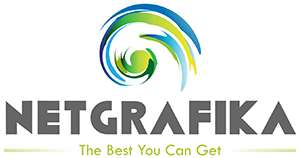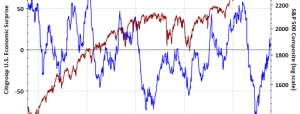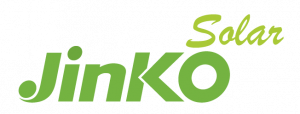
Eli Lilly and Company (NYSE: ) its financial results for the fourth quarter of 2024, showcasing robust growth in both revenue and net income. The company’s revenue for Q4 2024 reached $13.53 billion, marking a significant 45% increase compared to the same period in 2023. This growth was primarily driven by a 48% rise in volume, with Mounjaro and Zepbound being key contributors.However, this was slightly offset by a 4% decline due to lower realized prices. The non-incretin revenue also experienced a 20% growth over the previous year, highlighting the company’s diverse product portfolio. In terms of profitability, Eli Lilly reported a remarkable 102% increase in earnings per share () on a reported basis, reaching $4.88. On a non-GAAP basis, EPS surged by 114% to $5.32.This impressive performance included $0.19 of acquired in-process research and development charges. The company’s gross margin for the quarter expanded by 47% to $11.13 billion, with a gross margin percentage of 82.2%, reflecting a favorable product mix despite the pressure from lower prices. The company’s research and development expenses rose by 18% to $3.02 billion, accounting for 22.3% of the revenue. This increase was driven by continued investments in its early and late-stage portfolio.Additionally, marketing, selling, and administrative expenses saw a 26% rise to $2.42 billion, primarily due to promotional efforts for ongoing and future product launches. These investments underscore Eli Lilly’s commitment to maintaining its growth trajectory through innovation and market expansion.
Eli Lilly Reports 45% y/y Revenue Growth, Driven by Key ProductsWhen comparing Eli Lilly’s Q4 2024 performance against market expectations, the results present a mixed picture. The company’s revenue of $13.53 billion fell short of the anticipated $13.78 billion. Despite this, the revenue growth of 45% year-over-year remains a testament to the strong demand for its key products, such as Mounjaro and Zepbound, which continue to drive volume increases.On the earnings front, Eli Lilly exceeded expectations. The non-GAAP EPS of $5.32 surpassed the expected EPS of $5.3, highlighting the company’s ability to manage costs effectively and optimize its product mix. This performance indicates that while revenue targets were not fully met, the company was able to leverage its operational efficiencies to deliver higher-than-expected earnings per share.Notable developments during the quarter included the U.S. FDA approval of Zepbound for a new indication and the approval of Omvoh for Crohn’s disease. These advancements not only bolster Eli Lilly’s product pipeline but also support its long-term growth strategy.
Eli Lilly Expects Revenue in the $58 Billion to $61 Billion Range for 2025Looking ahead to 2025, Eli Lilly has provided optimistic guidance, projecting revenue in the range of $58.0 billion to $61.0 billion. This represents a potential growth of approximately 32% compared to 2024, driven by the continued success of recently launched products such as Zepbound and Mounjaro, as well as potential new product launches.The company also expects to expand its manufacturing capacity significantly, aiming to produce at least 1.6 times the amount of salable incretin doses in the first half of 2025 compared to the same period in 2024.Eli Lilly has set its EPS guidance for 2025 between $22.05 and $23.55 on a reported basis and $22.50 to $24.00 on a non-GAAP basis.This range reflects the company’s confidence in its ability to sustain earnings growth through strategic investments and operational improvements. The anticipated effective tax rate for 2025 is approximately 16%, which aligns with the company’s financial planning and tax strategy.In terms of operational efficiency, Eli Lilly expects the ratio of (Gross Margin – OPEX) / Revenue to be between 40.5% and 42.5% on a reported basis, and 41.5% to 43.5% on a non-GAAP basis. This indicates a continued focus on optimizing operational costs while driving revenue growth. Additionally, other income (expense) is projected to be an expense in the range of $700 million to $600 million, primarily due to higher interest expenses.Eli Lilly’s strategic outlook remains positive, with several initiatives underway to support future growth. The company is actively investing in expanding its manufacturing capacity, as evidenced by a $3 billion investment in its facility in Kenosha County, Wisconsin.This expansion aims to enhance its global injectable product manufacturing network, ensuring the company can meet the growing demand for its products.The company’s commitment to innovation is further demonstrated by its ongoing clinical trials and regulatory submissions. Eli Lilly anticipates several important Phase 3 readouts in 2025, which, if positive, could accelerate its growth trajectory.The acquisition of Scorpion Therapeutics’ mutant-selective PI3Kα inhibitor program also highlights Eli Lilly’s focus on strengthening its oncology portfolio.Moreover, Eli Lilly continues to prioritize shareholder value through a and a 15% increase in its for the seventh consecutive year.Apple’s Stock Dips Amid New U.S. Tariffs And Chinese Antitrust Concerns EA’s $1B Buyback Plan Boosts Investor Confidence Amid 6.4% Revenue DropIs Palantir Proving To Be The Dark Horse AI Stock?







